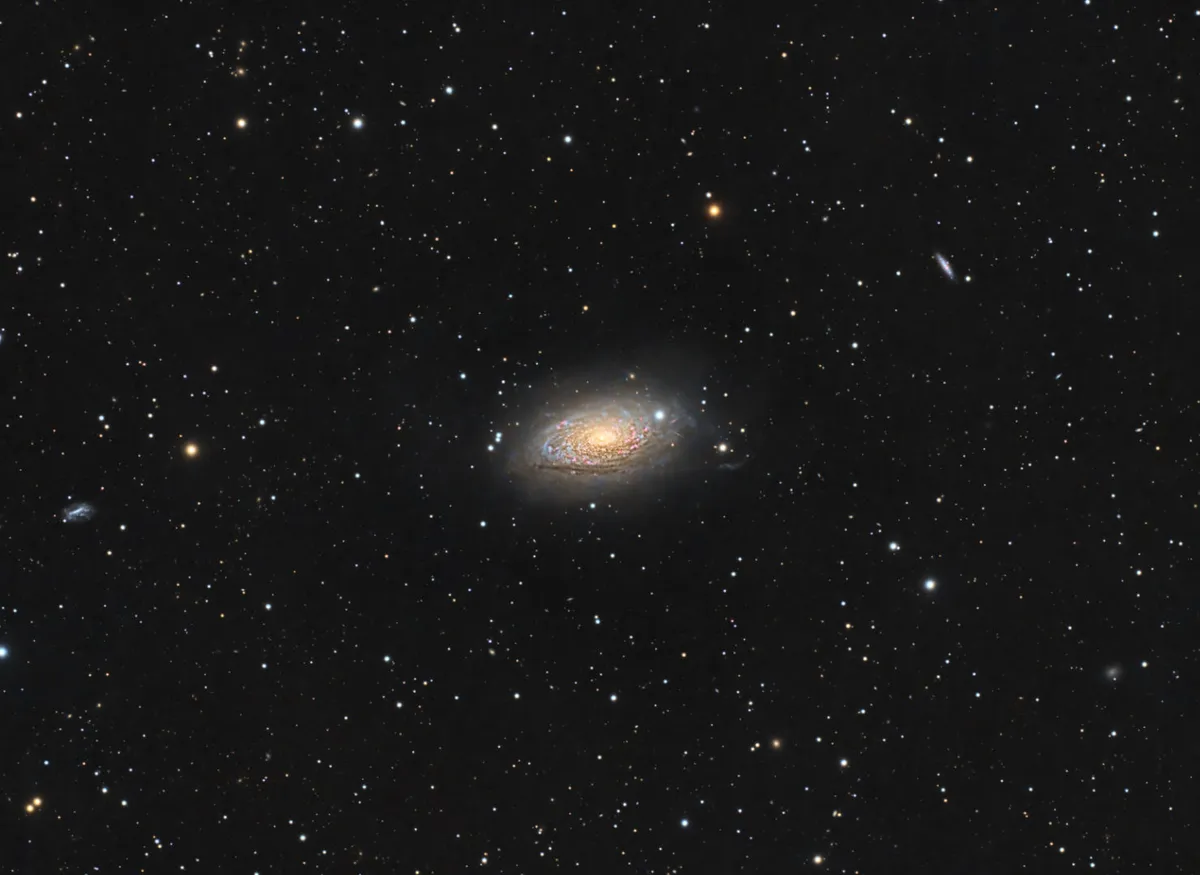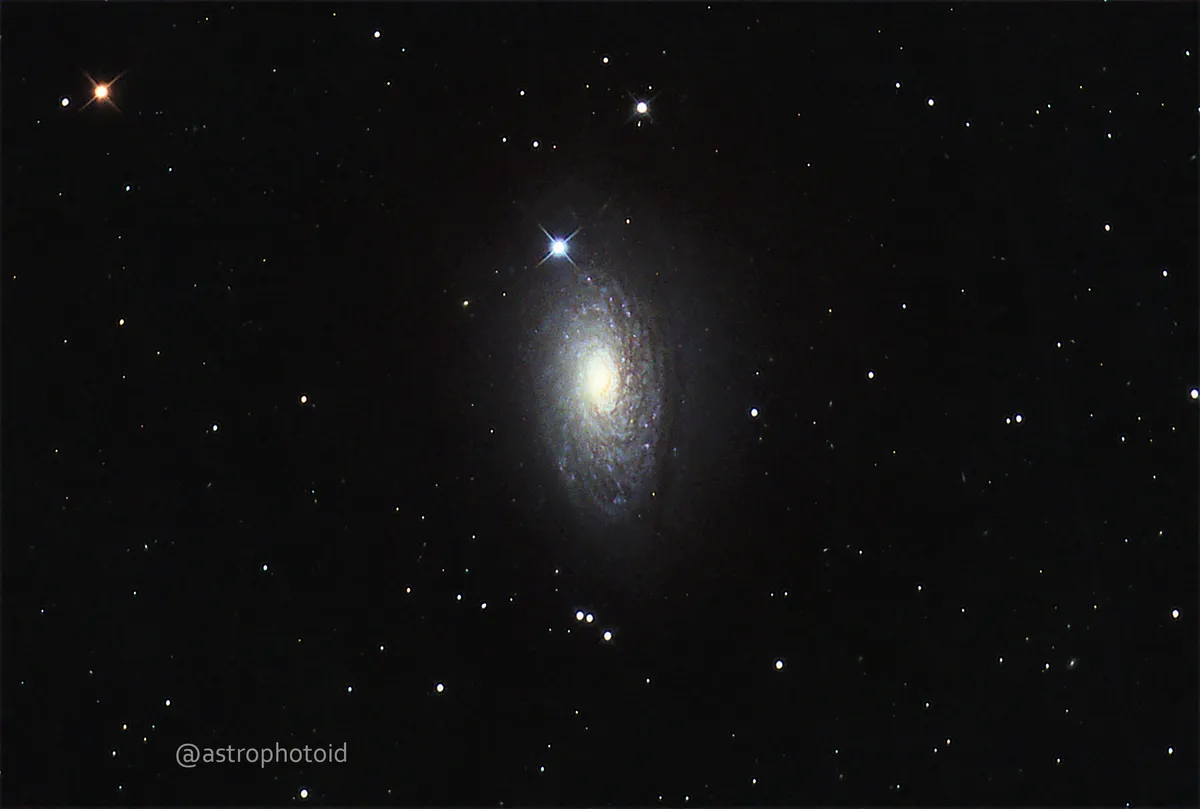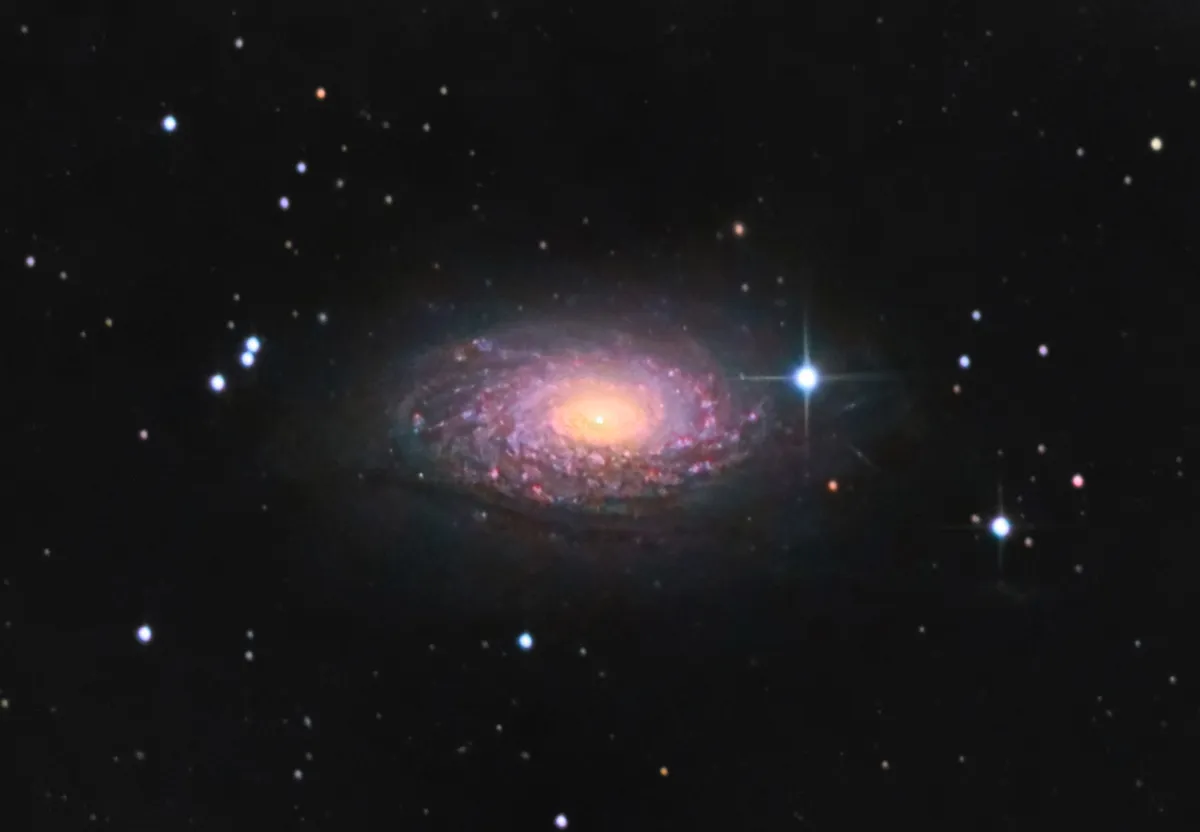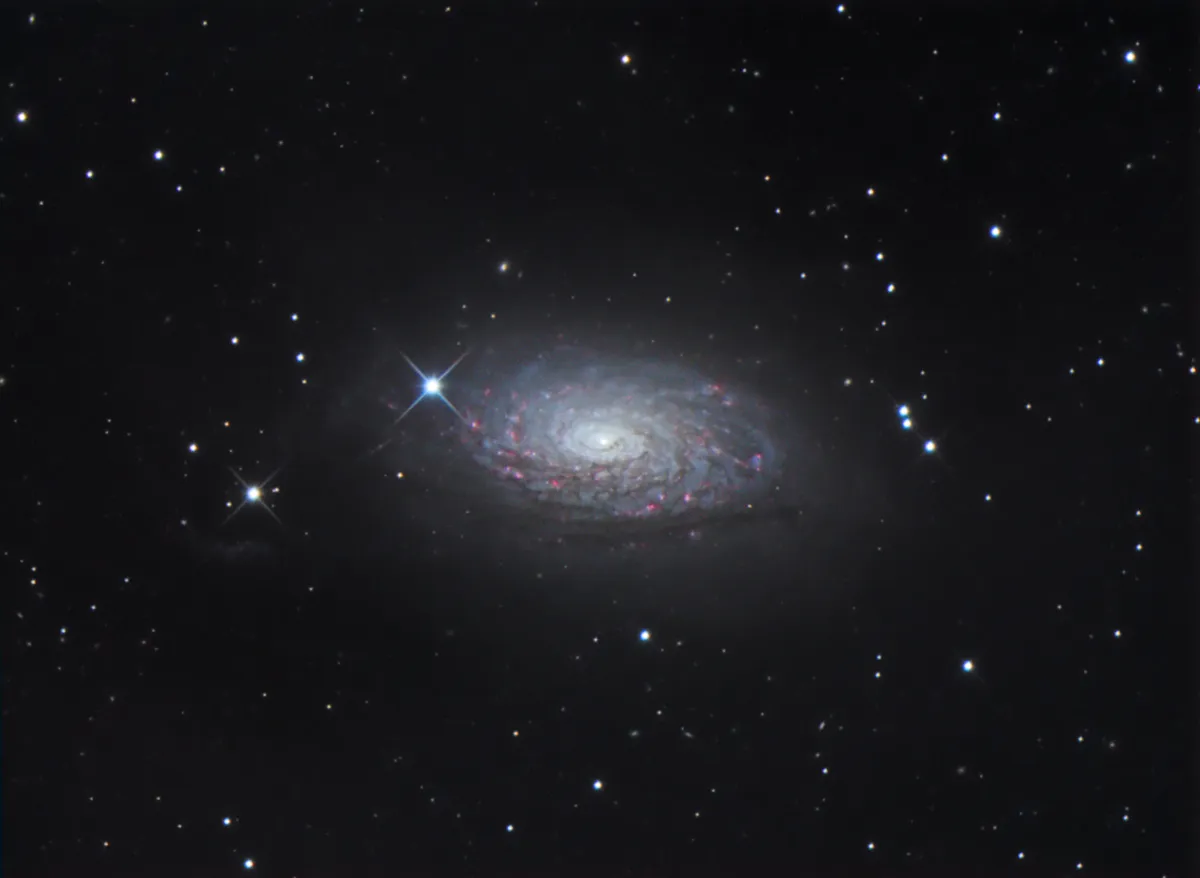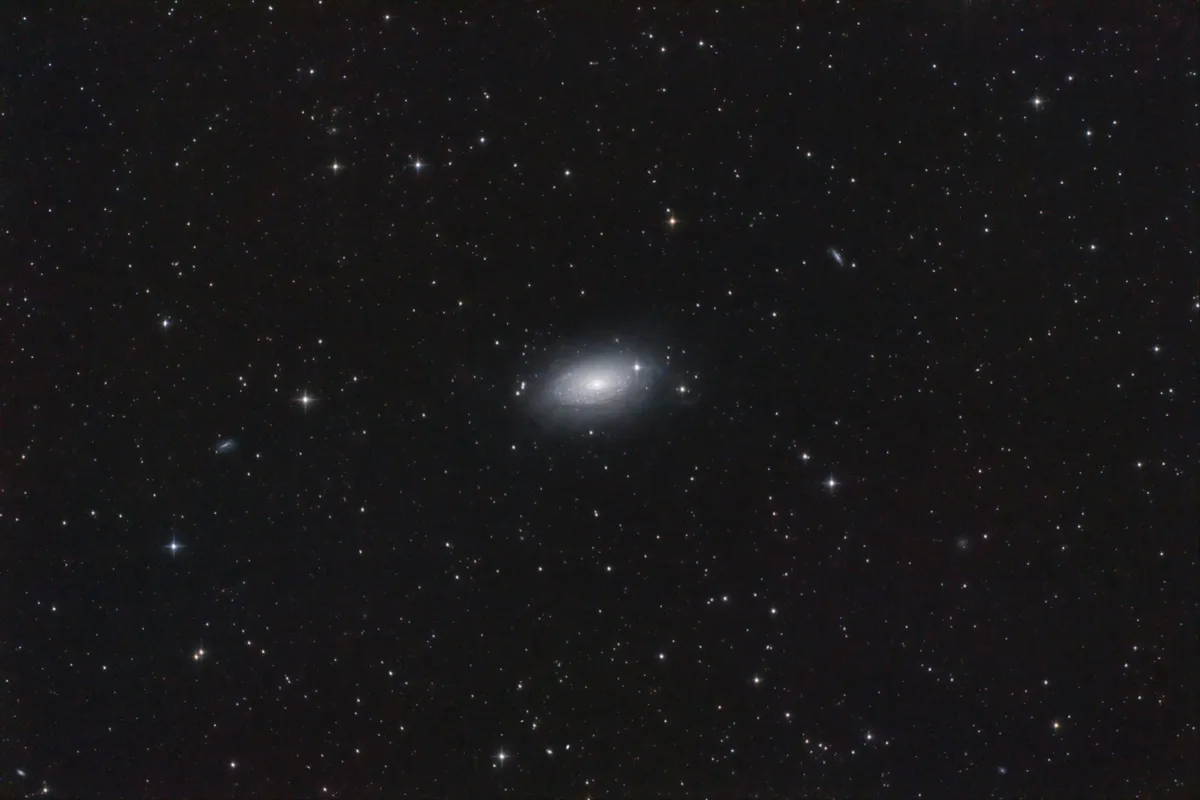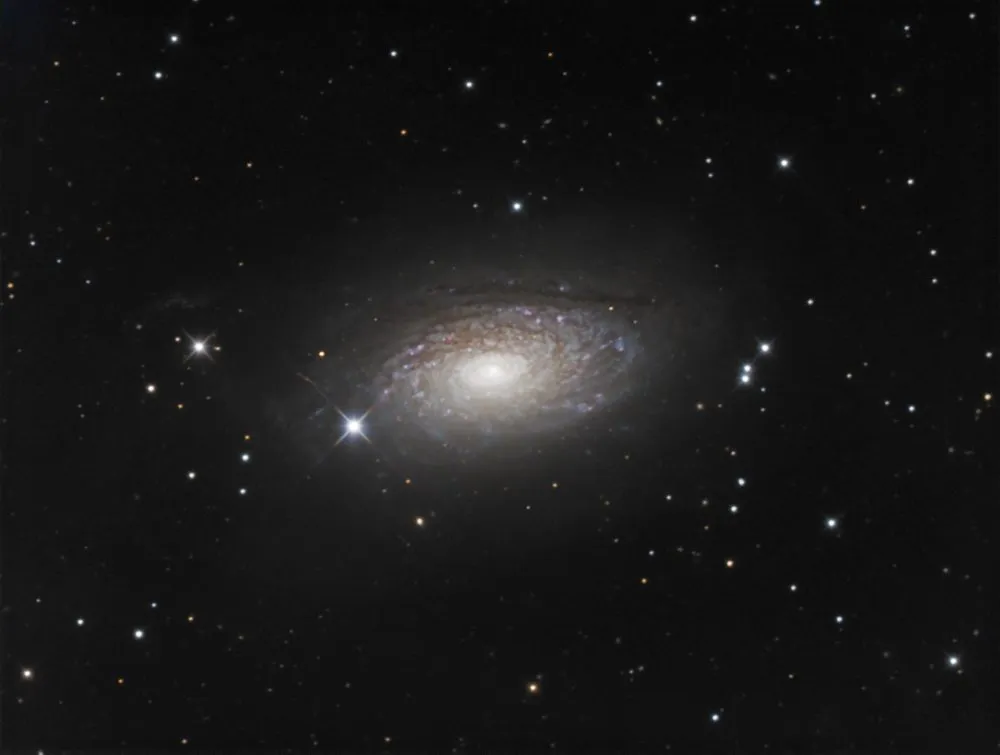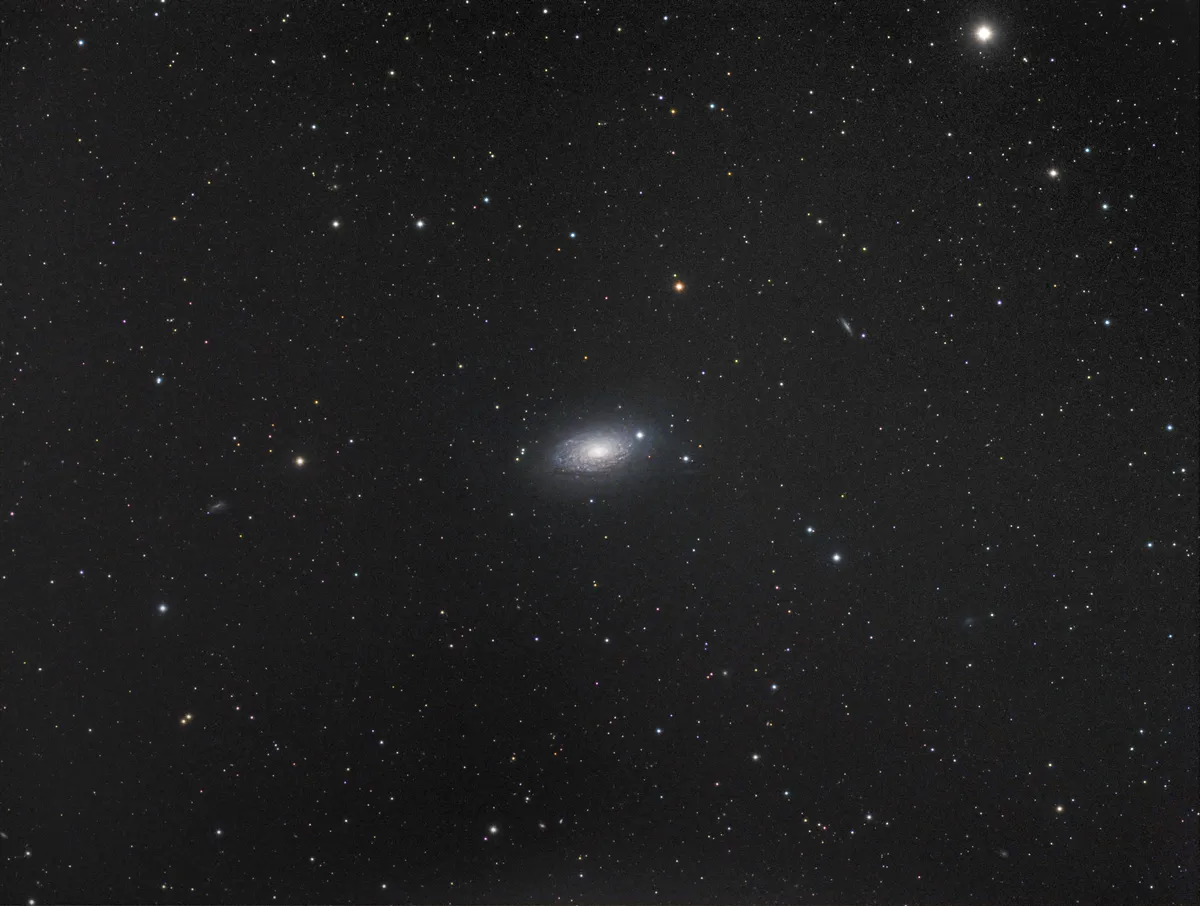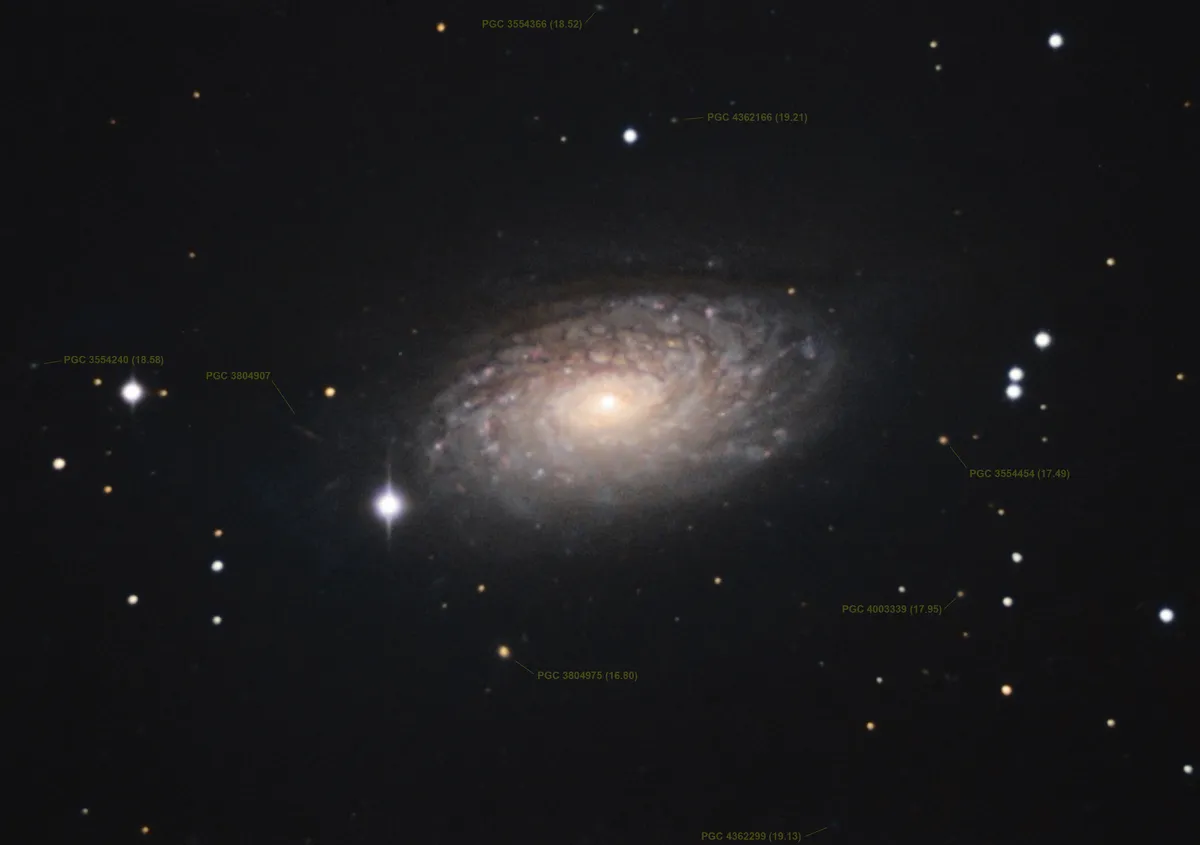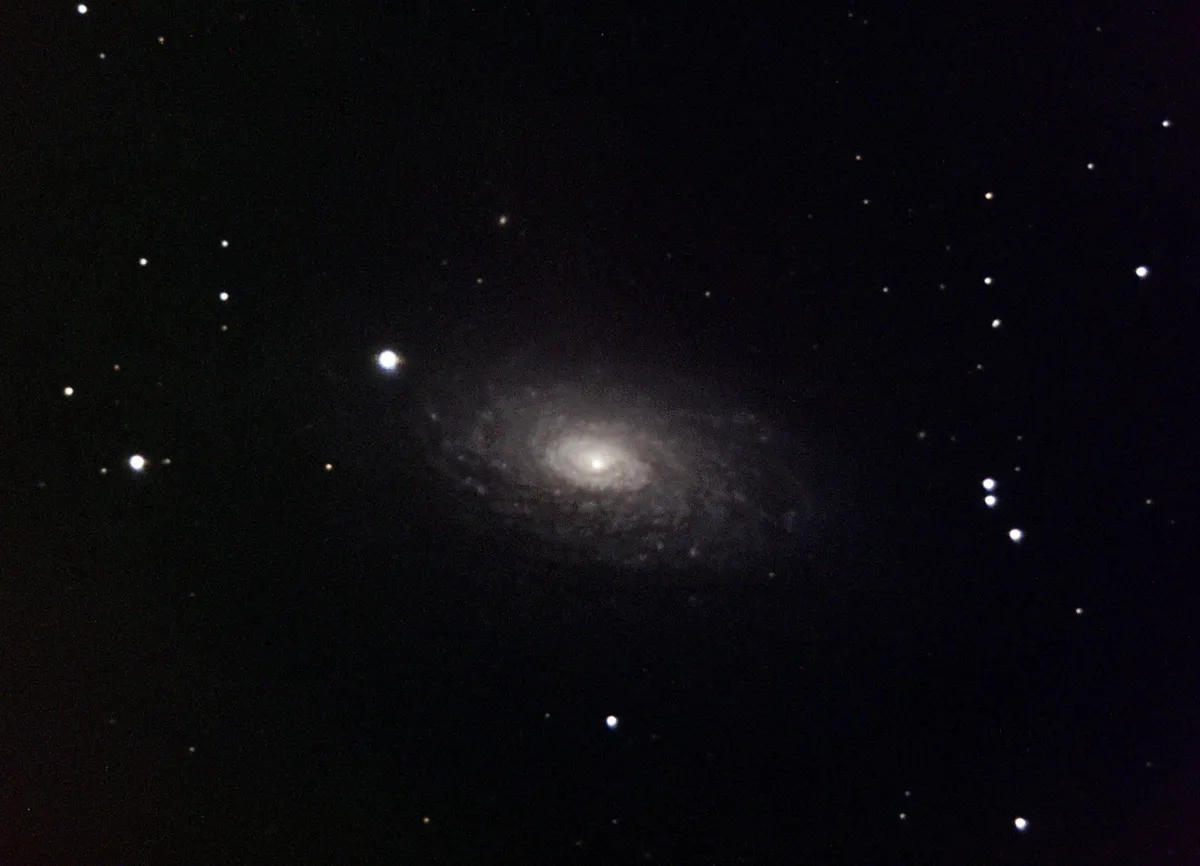Messier 63 is also known as the Sunflower Galaxy and is one of the most beautiful galaxies in the night sky, so-called due to the wispy spiral arms and bright centre that give it a floral appearance.
It may be a spiral, but a closer look at pictures of the Sunflower Galaxy reveals that its spiral arms are not distinct, defined structures like those of the Whirlpool Galaxy, for example.
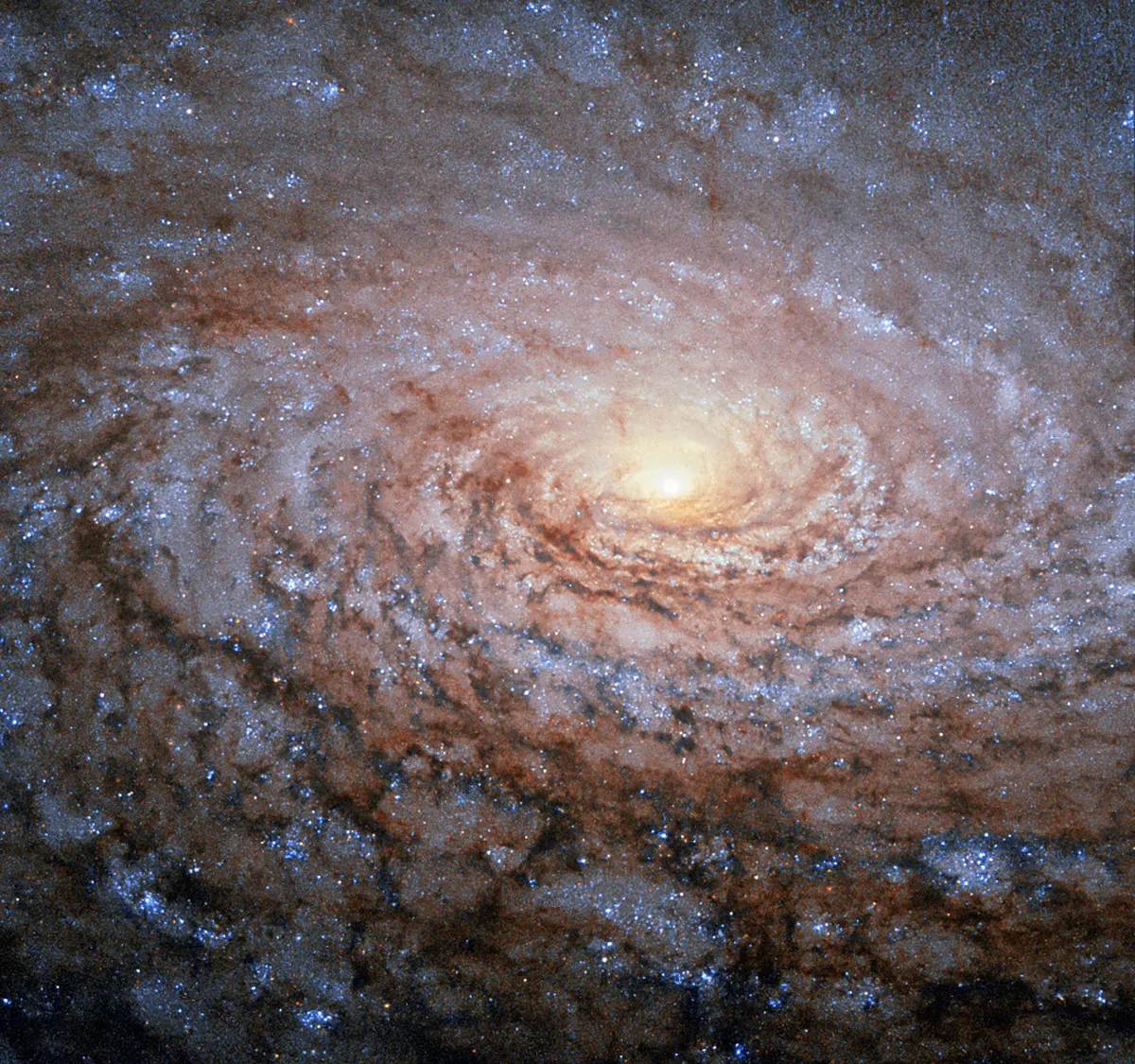
Instead, it appears to have an indeterminate number of spiral arms bound closely together, and is what's known as a flocculent spiral galaxy.
In fact, the Sunflower Galaxy only really has two spiral arms, but they are wound tightly round and round the galactic core, giving the impression of numerous arms.
The galaxy's tightly-wound arms and bright centre are what give the Sunflower Galaxy its floral appearance.
These arms are peppered with hot young stars glowing bright blue, indicating that this is very much an active galaxy and a region of rapid star formation.
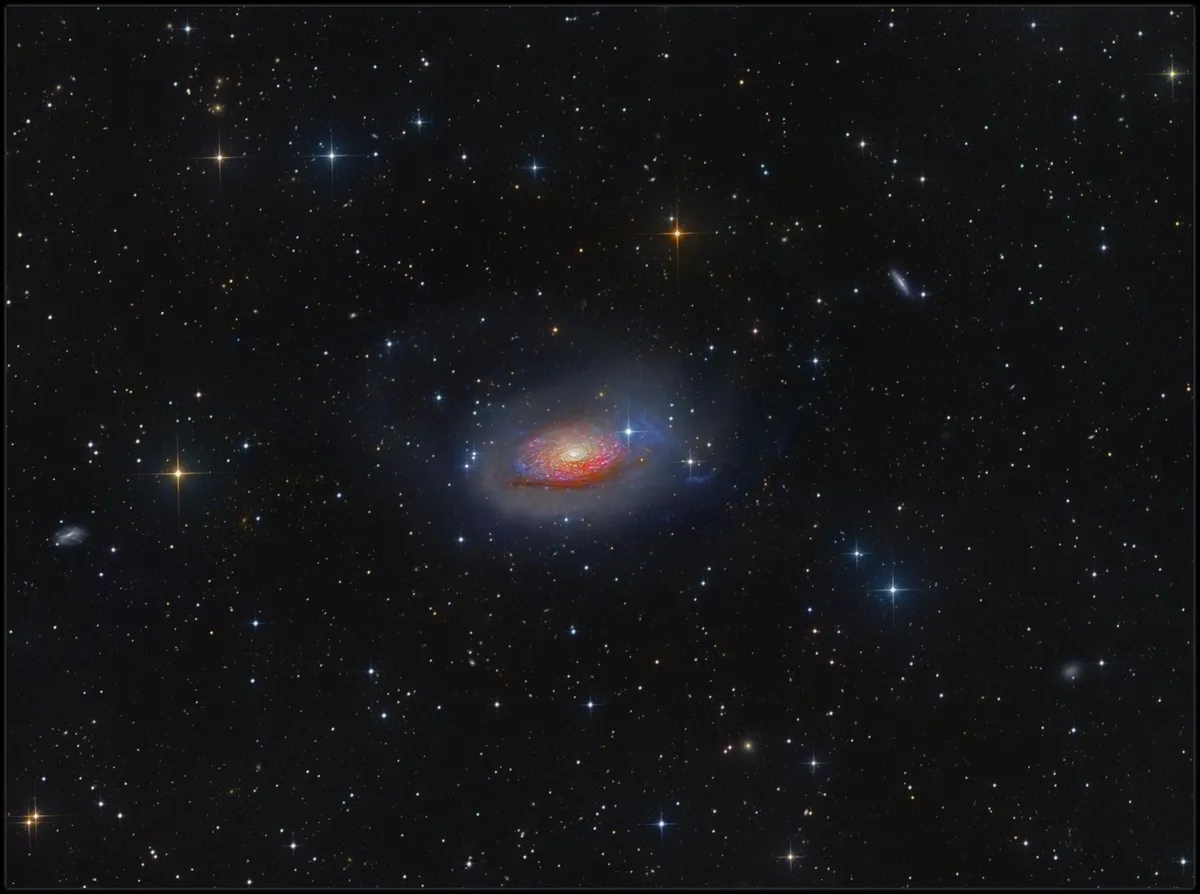
The Sunflower Galaxy is located about about 27 million lightyears away from Earth and the Milky Way and can be seen in the constellation Canes Venatici.
It belongs to the M51 Group of galaxies, named after its brightest member, the aforementioned Whirlpool Galaxy.
It was discovered by astronomer Pierre Méchain in 1779 and was the first of 24 objects that the French astronomer would add to the famous catalogue created by Charles Messier, the Messier Catalogue.
The Sunflower is entry number 63 in the catalogue, which is why it's known as M63 or Messier 63.
How to locate the Sunflower Galaxy
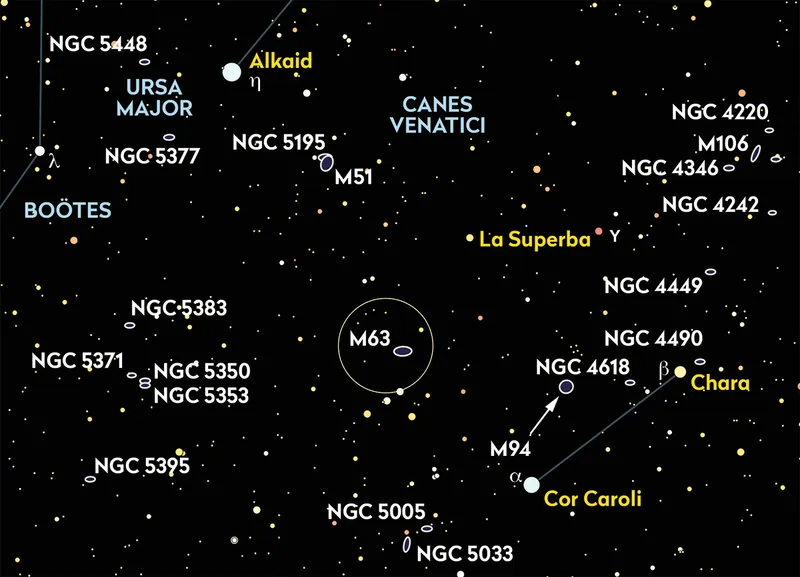
Springtime is the best time to see the Sunflower Galaxy, and April is a great time to observe it.
Spring is often referred to as Galaxy Season because it's so ripe for observing galaxies.
You can find the Sunflower Galaxy by location Ursa Major and Canes Venatici, and use them to locate the Whirlpool Galaxy, M51.
Look below this region and you'll be able to pick it out with your telescope.
What you'll see
The Sunflower Galaxy is 12.0 x 7.2 arcminutes and shines at mag. +9.3, and if you observe from a dark location, even a smaller telescope will reveal its flower-like spiral arms.
Use decent magnification and you'll be able to bring out the arms more, even under skies suffering from elements of light pollution.
Don’t be afraid to pump up the power to 150–200x.
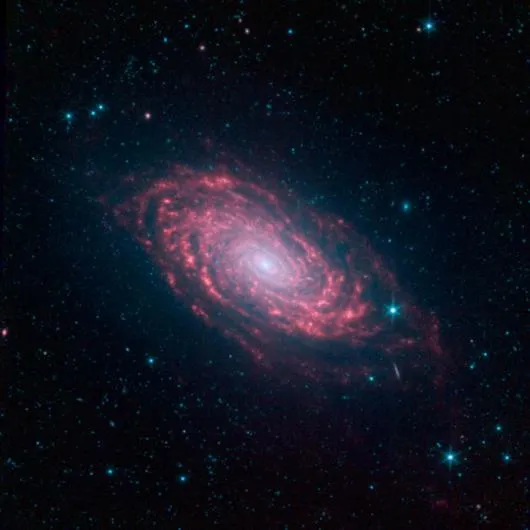
Pictures of the Sunflower Galaxy
Below is a selection of images captured by astrophotographers and BBC Sky at Night Magazine readers.
For help photographing galaxies, read our deep-sky astrophotography guide or learn how to fine-tune your images with our tutorial on deep-sky image processing.
And don't forget to send us your images or share them with us via Facebook, Twitter and Instagram.
